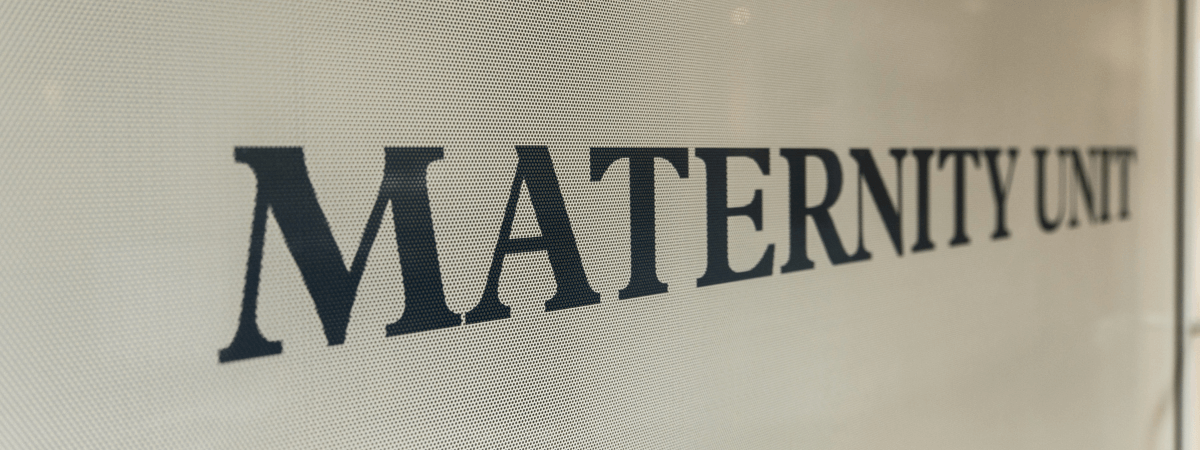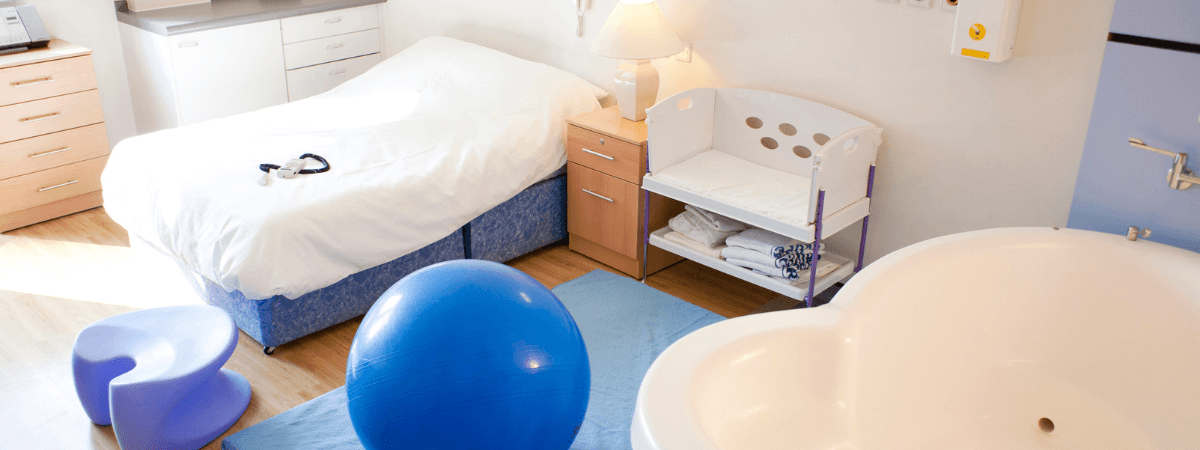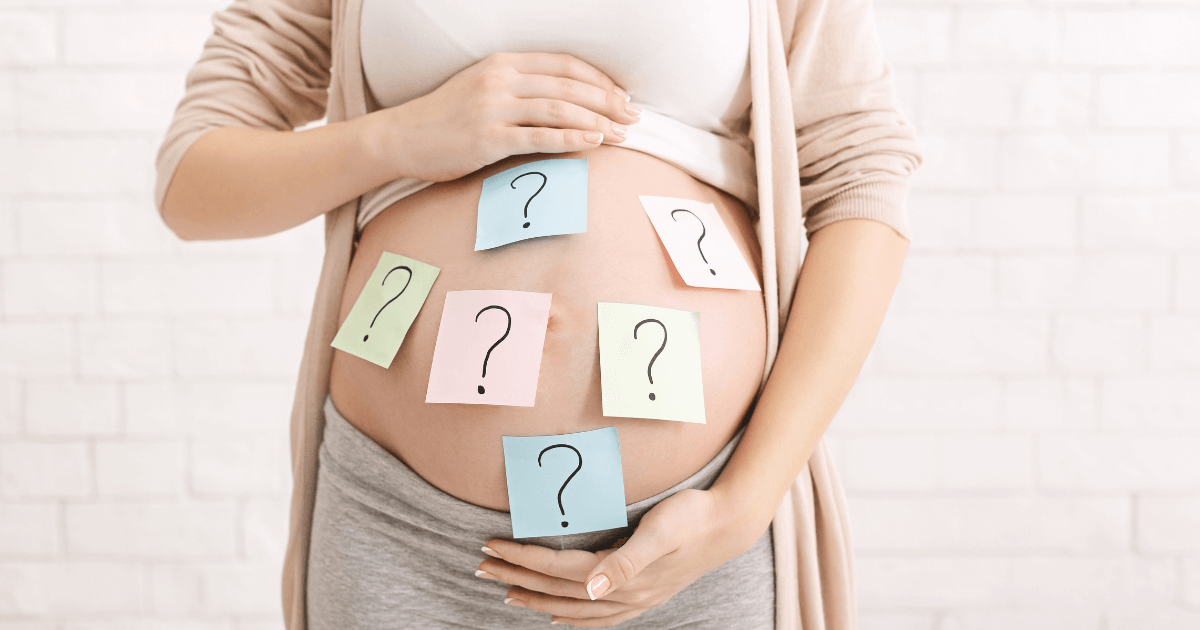A guide to maternity at Kingston, St. George's, Chelsea & Westminster, St Thomas’ and St. Helier hospitals
Contents
- Do I Have a Choice Where to Give Birth?
- How Do I Decide Which Hospital?
- Location of the Maternity Unit
- How Homebirth and Postnatal Care Work
- CQC Reports for Local Maternity Units
- Comparing Hospital Policies
- My Favourite Things at Each Hospital
- My Least Favourite Things
- Final Thoughts and Doula Support
Do I Have a Choice Where to Give Birth?
This guide will help you compare maternity hospitals and birth centres in South West London. The first thing to be clear about is that it is your choice which hospital in South West London you want to be linked to for maternity care and to birth your baby (if, indeed, you want to use hospital-based care at all!). BirthRights is an amazing charity to keep up to date with your rights in birth, and this link explains how you can refer yourself to any hospital you want: [click here to find out more].
NB As of October 2025, Chelsea and Westminster are limiting self-referrals from certain areas, all details here:
Once this article has helped you decide, you can complete a self-referral form for Kingston, St George’s, Chelsea and Westminster, St Thomas’ or St Helier online. There is no need to visit your GP first.

How Do I Decide Which Hospital to Give Birth In?
There are lots of factors to weigh up to decide the right hospital for you out of Kingston, St. George’s, Chelsea & Westminster, St Thomas’ and St. Helier. If you are particularly interested in having your baby in a birth centre, you may also like to read my article specific to South West London birth centres: [click here to be taken through].
Here are some other factors to help you decide where to have your baby locally:
Location of the Maternity Unit
South West London is a big place, so you will be closer to some of these hospitals than others. If you plan to birth at the hospital, you may want to think about how long it will take you to get there, rush hour traffic, ease of parking, etc. (see my top tips below!).
You can find your local hospital maternity unit [here].
Your antenatal care will be coordinated through the hospital. If you live close by, you’re likely to have your appointments at the hospital itself or in a clinic near you. If you live further away or across boroughs, you will probably need to travel further for your antenatal appointments too. Although, as someone who grew up in Cornwall, I can tell you the distances aren’t huge, so you still have choices!
How Homebirth and Postnatal Care Work
It’s worth knowing that if you would like a homebirth, the teams cover specific geographical areas. You can ring the hospital and ask about this, or send me a message and I can help you know which catchment area you’re in. If you know you want a homebirth from the start, it makes sense to book with the corresponding hospital that provides this service in your area. If you decide later in pregnancy, you may need to transfer, but this is not an issue.
Your postnatal care will also be delivered by community midwives according to geographical area, and so this will be fixed. If you choose the hospital closest to you, it’s more likely that some of the midwives you meet antenatally will also visit you in those early postpartum days, which can be a real boost. Regardless of which hospital you birth in, your postnatal care will be arranged automatically with the correct team before you go home.
CQC Reports for Maternity at Local Hospitals
A bit like Ofsted for schools, the CQC (Care Quality Commission) carries out regular inspections of maternity departments and awards ratings for different aspects of care, along with a report detailing what they found. The latest reports are linked below, along with the maternity department’s current overall rating (click on the rating to read the full report):
- Kingston Maternity (December 2022): Good
- St George’s Maternity (August 2023): Requires Improvement
- Chelsea & Westminster Maternity (May 2023): Good
- St Thomas’ Maternity (December 2022): Good
- St Helier Maternity (February 2024): Requires Improvement
As with any reports, you may want to delve into the details to see what the inspectors had to say about the areas that feel most relevant to you.
What Is the Hospital’s Policy on Different Aspects of Your Maternity Care?
You may have some elements in your pregnancy that you need additional support with, such as a medical condition. For example, I was diagnosed with gestational diabetes in my first pregnancy and moved from St George’s Hospital to St Helier Hospital, where I discovered that the two hospitals had different target thresholds for blood sugars. My friend had a similar experience with testing positive for GBS in a previous pregnancy and learning that the recommendations for antibiotics in labour for subsequent pregnancies varied. If there’s an issue that’s likely to come up for you and you’d like to compare hospital policies, you may be able to find this information on their website or email them directly to ask for a copy.

What Are Some of My Favourite Things About Maternity at Kingston, St George’s, Chelsea & Westminster, St Thomas’ and St. Helier?
As a doula, I spend time regularly at all these South West London hospitals, and here are some of my favourite things about them to help you decide:
Kingston Maternity
Kingston’s delivery suite, birth centre and home birth teams all have their own Instagram accounts, so it’s easy to find information about birth outcomes in each location (they vary quite a lot!), read birth stories and see up-to-date photos. The overall maternity culture at Kingston really stands out, with midwives consistently seeming happy and well supported.
In my experience, staffing of the midwife-led birth centre and home birth teams is reliable. If they have capacity, the birth centre teams will triage you directly, which means you can go straight onto the birth centre in labour, avoiding waiting in a bay with other families. There is also a birth pool available on the labour ward.
There are a good number of single rooms on their postnatal ward, particularly for mums who have had a caesarean birth, which can really make a difference to your experience afterwards.
The staff also take a special interest in biomechanics and have produced a really helpful leaflet, which shows their motivation to support physiological birth if this is what you want.
St George’s Maternity
St George’s is the largest hospital in South West London and has some amazing facilities for fetal medicine and NICU, offering specialist care before and after the baby is born.
The early pregnancy unit at St George’s operates on a walk-in basis, so if you have any concerns early on, or you’re not sure when you might have conceived, you can head there without needing to see your GP first, which can be really helpful.
St George’s is also good at offering tours of their birth centre (although it’s not always open, so it may not be as advantageous as it seems!). They have recently added a birth pool room to their labour ward.
St George’s also facilitated a maternal assisted caesarean recently. If this is something you might be interested in, message me for more information.
Chelsea and Westminster Maternity
The birth centre at Chelsea and Westminster is top-notch. If you are booked to have your baby there, they have a special number to call them in labour so you can go straight onto the birth centre and receive all your care there. They also have an active Instagram account with lots of birth stories and opportunities to meet some of their staff.
If you’re lucky enough to live in the catchment area of the Sunflower Team, you’ll receive true continuity of midwife care, with the same team providing all your antenatal and postnatal care and coming to support you in labour at home or in hospital, depending on your preference.
The hospital is modern, and the facilities for intrapartum (in labour) care are good. There are also two birth pools available on the labour ward and wireless CTG monitoring in all rooms.
St Thomas’ Maternity
St Thomas’ is a large teaching hospital, like St George’s, with all the specialist facilities that go along with that. This probably shouldn’t sway your decision too much, but the views from the maternity unit on the 7th floor are amazing – you can give birth with a view of the London Eye!
The rooms on the labour ward and birth centre are lovely and big, with plenty of room to move around. They are all en suite.
St. Helier Maternity
St Helier is often the lesser-known maternity choice in South West London, which means you can benefit from a more relaxed atmosphere and less busy antenatal clinics and facilities when you’re in labour.
Their birth centre has an active Instagram account that gives you an insight into their approach to birth, and around 15–20% of births at St Helier take place there, which is higher than at most hospitals. So if you’re interested in a birth centre birth, you may want to consider this hospital. The birth centre manager is wonderful and supportive for women wanting to make informed choices, including birthing out of guidance.
Almost all of the rooms are ensuite although in the birth centre the toilets are behind a curtain although most women in labour don't mind too much!

What Are Some of My Least Favourite Things About Maternity at Kingston, St George’s, Chelsea & Westminster, St Thomas’ & St Helier?
As well as the upsides, here are some of what I see as the downsides of each hospital:
Kingston Maternity
It’s hard to think of any major downsides at Kingston apart from the parking, which is limited and crowded (but better than at more central London hospitals!). Although it’s very busy, it’s only a small hospital and doesn’t have the same amenities as some of the others in terms of food outlets, etc.
There is a high level of intervention on their delivery suite, but this is comparable to the other local hospitals too.
St George’s Maternity
If you read the CQC report above, you’ll see that St George’s has some issues at the moment, particularly with staffing. This is reflected in the availability of the Carmen Suite (midwife-led unit) and home birth team. If neither of these options is available, accessing a birth pool means relying on a single option—the one they have recently installed on the labour ward. Some families report that a lack of staff on the postnatal ward can mean they feel unsupported at this stage.
As a doula, my least favourite thing about St George’s is that some of the labour ward rooms are not en suite! If you’re having a caesarean or want an epidural, this won’t be an issue as you’ll have a catheter, but if you’re hoping for a more active birth, a toilet can be really helpful in labour (it’s nicknamed the “dilation station!”), and having to walk across the corridor to a shared facility is not appealing.
Chelsea and Westminster Maternity
Make sure the location really works for you—it’s the other side of the river and traffic can be terrible, especially during rush hour. It also has very limited parking, so most people take a taxi.
Another thing to consider if you’re out of the natural catchment area for Chelsea & Westminster is that it’s very busy at the moment, particularly for out-of-area antenatal appointments. Even in labour, care has felt extremely busy in my experiences lately. This could mean longer waits for beds following induction, long stays on triage before you’re allocated your own room in labour, and on one occasion, they had to close the labour facilities as they were so busy—though this is very rare.
Some women find the postnatal ward crowded, and a lack of private rooms means you’re often in a shared bay, although this is common to most hospitals.
St Thomas’ Maternity
St Thomas’ services cover a wide area and it’s the furthest from the South West London boroughs, so consider carefully whether the location really works for you. Being in central London means entering the congestion zone and parking is not easy. If you’re having a planned birth, such as an induction or caesarean, this may be fine, but think about it carefully if you’re planning to head to the hospital in labour.
Another thing to know about St Thomas’ is that in their “home from home” (midwife-led) unit, the main rooms are more like labour ward rooms with a bed as the focal point. To access the birth pools and more active birth equipment, you have to go into another room that has no windows. So you could end up being in three rooms before you actually birth your baby: triage, a room on the ward, and a pool room!
The final thing about St Thomas’ is that for some reason, it’s unbelievably hot. Consistently.
St. Helier Maternity
I’m not going to lie to you—visually, St Helier isn’t the most attractive place! Someone told me recently that the hospital is built back to front, and the side of the site that faces the main road is actually the back of the hospital, which makes a lot of sense! Situated on the edge of the large St Helier estate, it doesn’t have a modern central London vibe (mind you, neither do any of the others apart from Chelsea & Westminster). I also once saw a bucket collecting drips in the labour ward corridor! Honestly though, I would encourage you to look past these aesthetics if you want a quieter, more laid-back vibe, as the maternity rooms are all very adequate (with en suite bathrooms).
St Helier, along with Kingston, has the least specialised NICU facilities of all the hospitals in this article, which will be no issue at all for a healthy mum and baby, but may be good to know if you’re anticipating a more complicated journey.
The antenatal and postnatal wards are also quite old and can be hot and stuffy too. As above, there aren’t many private rooms.

The Preparation You Do Is More Important Than the Maternity Department You Choose!
I hope some of the above will help you decide which hospital to choose for your maternity journey. But I want to end by saying that how you prepare, and the support you have around you, is by far the most important thing! This is also the element you are most in control of, which I hope reassures you.
Kingston, St George’s, Chelsea & Westminster, St Thomas’ and St Helier all have far more in common than they do differences in terms of staff (some you’ll click with, some you won’t), standard guidelines and policies, and the high rates of induction, interventions and unplanned caesarean births.
The most important thing is engaging with your own pregnancy and birth, working out what you want, and then making the best choices for you in terms of
making that happen. I am obviously biased, but a birth doula can massively help you with this. Find out more about my [birth doula services here].
And if you’d like to read more about local maternity services, I have a more in-depth article about local birth centres
[here].


